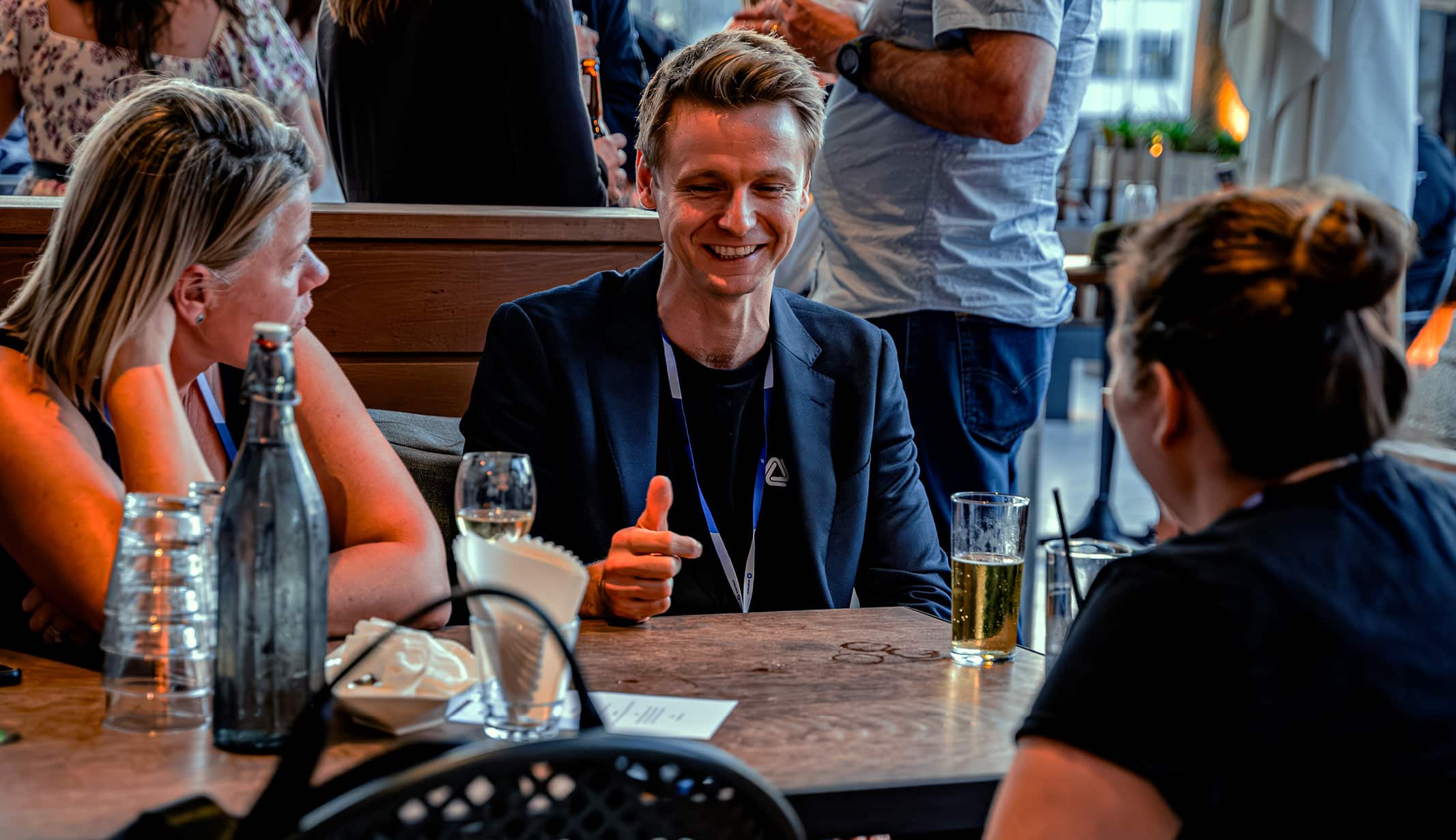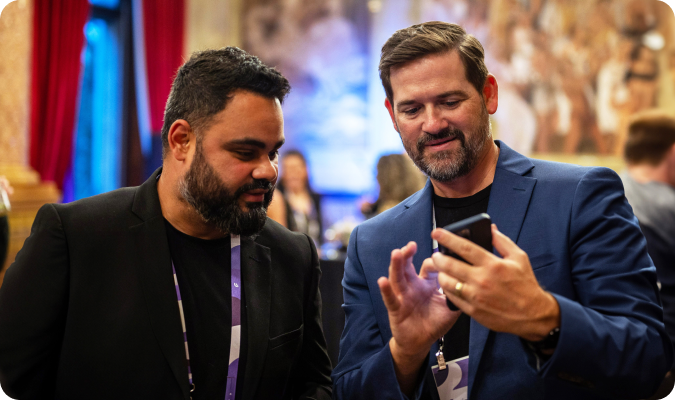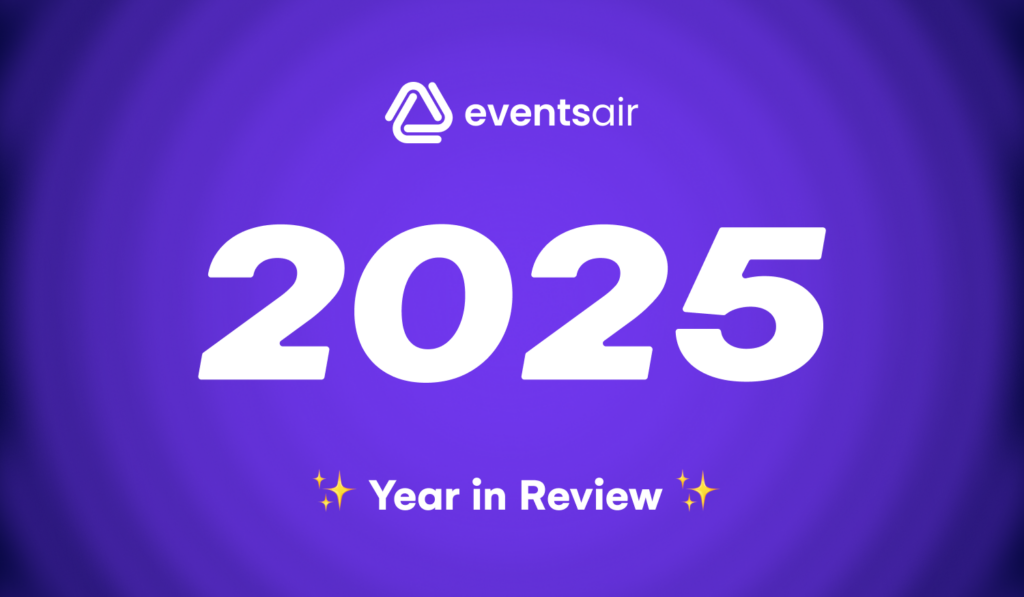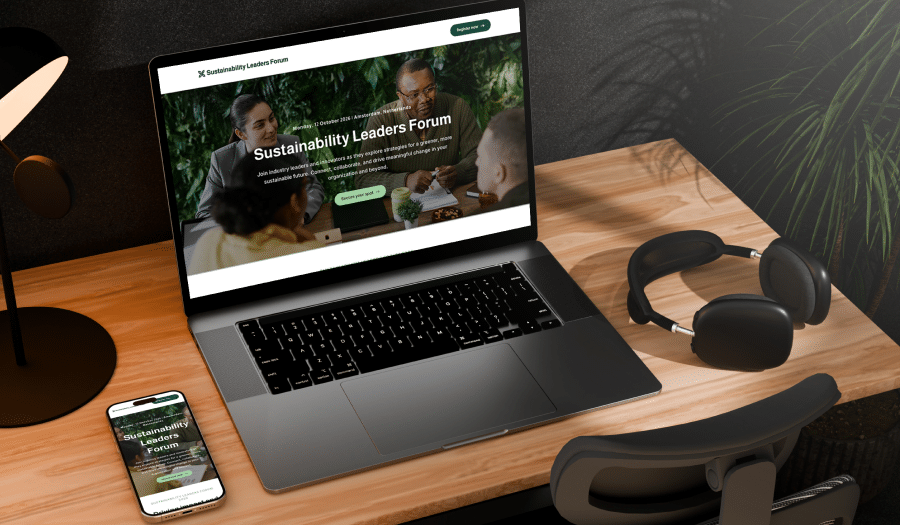
Networking at events is both a perk and a pivotal element. With 64% of planners reporting an increased interest in networking post-Covid, according to Skift Networking, we can’t overstate the importance of structured and effective networking opportunities at any event – whether you’re delivering in an in-person, virtual or hybrid format.
This article will explore how you, as a professional event organizer, can foster environments that promote meaningful connections before, during and after any event.
Why networking at your event is important
Networking transforms events into dynamic environments where attendees can build relationships, share knowledge and foster engagement in their specific community or industry. For event organizers, effective networking can significantly impact attendee satisfaction and the overall success of the event.
When done well, networking enables attendees to exchange ideas, which can lead to innovation and new business opportunities. Positive event networking not only enhances the overall value of your event, but also increases the likelihood of attendees returning.
The challenges of encouraging networking
Event networking can come with its challenges, especially when you are facing constraints around attendee diversity and language barriers, venue constraints and the varying objectives of attendees. These challenges, however, can be managed and even transformed into opportunities with the right strategies.
It is crucial to recognize that sporadic coffee breaks between keynote speeches are not sufficient for strategic networking opportunities. For large events, especially when you have multiple sponsors and exhibitors to consider, networking should be organized as a separate, focused activity due to its potential for creating new business relationships and opportunities.
Tips for effective networking at events
An effective networking strategy should include activities before, during and after the event. It is a continuous process that begins long before the event starts and extends well beyond the last day.
Pre-event networking tips
At the pre-event stage of event organisation, it is important to set the foundations for networking. When looking through the event information, attendees are often interested in receiving information about other participants besides the speakers.
Build an event community
Creating a communal space online can help attendees form connections before the event. This space can be a dedicated section on your event website or a social media group where attendees can introduce themselves, discuss topics of mutual interest and plan meet-ups.
Reach out with personalized emails
Send engaging, personalized emails to make attendees feel valued and excited about the networking opportunities. Information about other participants and key networking opportunities can encourage attendees to prepare for interactions ahead of time.
Provide new attendees with tips and advice
Help new attendees navigate the event effectively by providing tips on how to engage, whom to connect with, and what sessions might be most beneficial, based on their interests. With EventsAir, you can easily segment and filter your communications – allowing you to deliver valuable, personalized content to attendees.
Promote event app adoption
All-in-one event management solutions such as EventsAir may offer a customizable event app. This is an incredibly handy tool for pre-event networking, as it can centralize information and facilitate networking through features like direct messaging, attendee directories and people-matching algorithms. These tools help attendees connect with others who have similar interests or complementary professional goals.
Main event networking tips
During the main event, your task is to make the networking experience as seamless as possible. If you’re hosting a large event with thousands of participants, you also need to ensure they can locate each other, as quickly and easily as possible.
Utilize digital badges and beacon technology
Implement digital badges and beacon technology to simplify the process of locating and connecting with other attendees. These technologies can indicate when attendees arrive and help them find each other easily.
Set up networking hubs
Designate areas specifically for networking, such as coffee tables and lounges, to facilitate interactions. Provide a map of these hubs to help attendees locate each other and plan where to meet.
Implement live audience polling
Use live polling to engage attendees during sessions and gather real-time feedback. This interaction not only keeps attendees involved but also encourages them to connect with each other based on shared opinions.
Introduce unexpected networking opportunities
Consider introducing unique or humorous activities that can serve as icebreakers, and promote them through your attendee app. These activities encourage spontaneous interactions and can make networking more enjoyable. And, if you gamify these elements with rewards, then
Schedule regular breaks
Regular, structured breaks are essential to give attendees time to mingle, absorb content, and engage in discussions without feeling rushed. Better yet? Schedule specific networking breaks to further encourage connection.
Offer complimentary refreshments
Everyone loves free food and drinks! Providing complimentary refreshments can create a relaxed atmosphere that encourages attendees to stay and network, rather than leave the venue for meals or breaks.
Post-event networking tips
Networking doesn’t end when the event does. Fostering connections afterwards is crucial for lasting impact. At the post-event stage of event organization, your task is to make the connections made during your event last.
Follow-up emails
Send personalized follow-up emails, summarizing the event highlights and suggesting ways to connect with fellow attendees. Include contact information or social media links of people they might have interacted with, with their consent.
Social media groups
If you’ve created a dedicated social media community for your event, now is the time to put it to work. Encourage attendees to share their experiences, post photos and tag each other. This keeps the conversation going and helps build community for next year’s event.
Feedback surveys
Include a networking section in your post-event feedback surveys. Ask attendees who they connected with and if they would like introductions to others. This can provide valuable insights for you and facilitate connections for your attendees.
Reunion events
Organize smaller, informal reunion events or webinars that allow attendees to reconnect and discuss their post-event progress or collaborations.
How can EventsAir help with networking?
To sum up, if you want to deliver a seamless networking experience for your attendees, especially at large events with hundreds or even thousands of participants, you need the support of an all-in-one event management platform, such as EventsAir. By integrating technology and thoughtful planning into every stage of your event, you can create an environment that not only meets but exceeds the networking expectations of your attendees.
At EventsAir, we can help you organize effective networking opportunities with our best-in-breed technology suite. It includes a customizable event app; as well as tools to help you promote your event on social media, build a beautiful event website, and create targeted email campaigns to engage and delight your event audience.
We have one simple mission: to help event planners deliver the WOW in their events with the world’s most powerful event management technology. We’ve delivered some of the world’s biggest events, and we’d love to help you too.
If you would like to understand how we can help you unleash the power of data and analytics on your next event then schedule a demo with one of our team members today.
Attendee Experience | Event Technology & Apps | Networking
See EventsAir in action
Discover why 12,000+ event professionals trust EventsAir to deliver effortless events, every time.




